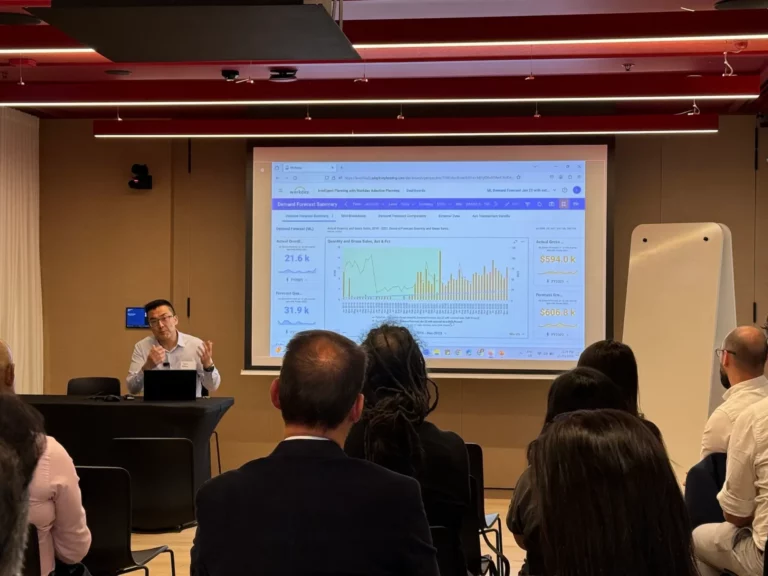Introducing a cloud-based approach to corporate budgeting, forecasting and planning
What is Adaptive Insights?
Adaptive Insights is a pure-play cloud technology that was founded in 2003. One of the founders was an ex-CFO, who at the time, was frustrated with the well documented inability of spreadsheets to adequately cater for enterprise planning.
Adaptive Insights established itself in the Corporate Performance Management (CPM) market with its flagship corporate budgeting and forecasting tool, Adaptive Planning. In recent years it had added other modules including Adaptive Discovery for dashboards and visualisations, Adaptive Consolidation for financial consolidation and Adaptive Office Connect for integration with the Microsoft Office Suite.
QMetrix chose to partner with Adaptive Insights because it provides an excellent alternative to IBM Planning Analytics (TM1), which was the preeminent offering in the CPM space over the last decade.
Our commentary below is predominantly focused on the Adaptive Planning module within Adaptive Insights.
Strength in ease of use
Adaptive Planning’s strength, in our view, is its ability to allow finance people within the organisation to build and manage the solution without needing specialist external resources or needing to invest substantial time in skilling up internal resources. It has struck the right balance between ease of use, where no programming is required, whilst still providing the sophisticated modelling environment necessary to cater for a wide variety of needs.
This is evidenced by Adaptive Insights growing to become the market leader in cloud-based planning with over 4,500 customers in 2019 and a broad range of industries represented across small, medium and large enterprises.
This notion of self-sufficiency is backed by survey ratings which consistently rank Adaptive Insights amongst the highest for ease of implementation and lower than expected implementation cost (source: Gartner Magic Quadrant for CPM, 2015). Adaptive Insights promotes that about 25% of its customer base has ‘self-implemented’.
As a consultancy that is predominantly a services business, this is not necessarily a good thing for QMetrix, but it is certainly a good thing for our clients.
Adaptive Planning has all the administrative processes pre-built, whilst the core models are constructed using 3 main sheet types – Standard Sheets, Modelled Sheets and Cube Sheets. Each of the sheets have been designed to have the ‘look and feel’ of Excel, in order to appeal to a finance audience, with each sheet’s typical application discussed below.
Sheet types in Adaptive Insights – standard sheets, modelled sheets and cube sheets
Standard sheets
The standard sheets within Adaptive Planning are commonly used for entry of overhead expenses by general ledger account and level. ‘Levels’ in Adaptive Planning terminology are cost centres or profit centres that form part of the organisational hierarchy.
Standard sheets have some really neat features, such as the ability to ‘split accounts’ which enable the budget contributor to provide a further break down of detail. It also enables users to switch seamlessly between entering budgets by general ledger account for a level, or by level for a general ledger account.
Other features consistent with best-of-breed tools include the ability to do ‘top-down’ budgeting – for example, by entering a value for the year and having it spread across periods based on historical or customised seasonality.
Modelled sheets
The modelled sheets within Adaptive Planning are generally used for any ‘list based’ budgeting requirements. A common application of modelled sheets are for budgeting personnel expenses, which may be budgeted by listing specific employees or roles.
Modelled sheets allow the user to enter employees or roles line by line, adding attributes via drop down selections to those employees or roles, such as pay rates or awards, super funds, health benefits and so on. Modelled sheets generally invoke rules and calculations from assumptions set elsewhere in Adaptive Planning.
Other applications of modelled sheets include capital planning (by assets or groups of assets) which can also include a financing component.
Cube sheets
The cube sheets within Adaptive Planning, as the name suggests, are applied when there is a need to budget by multiple dimensions. This is commonly applied to revenue planning where there is a need to budget by customer, product/service, market segment or geographic region. Levels in the organisation hierarchy would also be a dimension within an Adaptive Planning cube sheet.
In addition to the 3 sheet types described, Adaptive Planning has some other great features that form part of its offering. Transparency in how numbers are derived is typically not a strong feature of CPM software, but Adaptive Planning enables users to ‘drill through’ on a number to view the underlying assumptions that make it up, including update history detailing when and by who.
Once budgets and forecasts are complete, Adaptive Office Connect enables Adaptive Planning to be leveraged as a financial and management reporting tool, providing the finance team with the ability to seamlessly report on financial data using Microsoft Excel, Word or PowerPoint.
Does Adaptive Planning really deliver?
All of Adaptive Planning’s three sheet types are configurable, but as a prospective customer evaluating the merits of Adaptive Planning and its application to the specific planning needs of their organisation, the obvious question is: will these 3 sheet types adequately cater to our needs?
The answer to this question is ‘most likely’.
There is perhaps no obvious indicator when assessing an organisation’s planning requirements as to how suitable Adaptive Planning is. Having pre-configured sheet types and administration comes at some cost in flexibility, but when weighed up against the clear benefits derived from shorter implementations and a finance ‘owned and managed’ solution, it is no great compromise.
Perhaps the 80/20 rule is a good way to approach answers to this question – and for the 80% of business where the technology can be applied – it does a stellar job.
Having worked for a number of years with IBM Planning Analytics (formerly known as TM1), we appreciate the total flexibility and power that IBM Planning Analytics can provide in bespoke applications, but equally recognise the ‘non-finance’ skill set and steeper learning curve required to deploy such solutions.
Approaching any project, we always suggest our clients undertake a needs analysis. This allows us to recommend the appropriate technology for their organisation’s planning needs. With time-to-value consistently shorter in our experience, Adaptive Insights is often heavily considered.
Want to learn more? Dive into more features, benefits and videos of Adaptive Insights or start a conversation to see which corporate Budgeting and Planning tool could work best for your organisation.
This post was originally published on 16 August 2015 and updated since.





